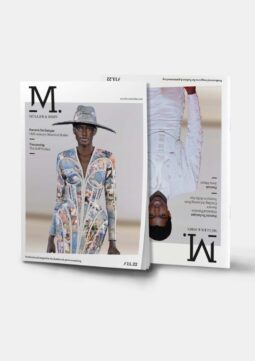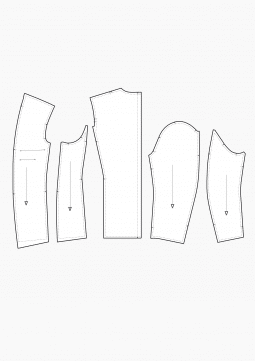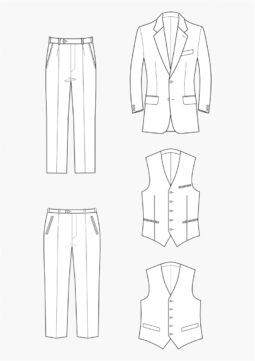Sewing Lining fabric
Deutsch
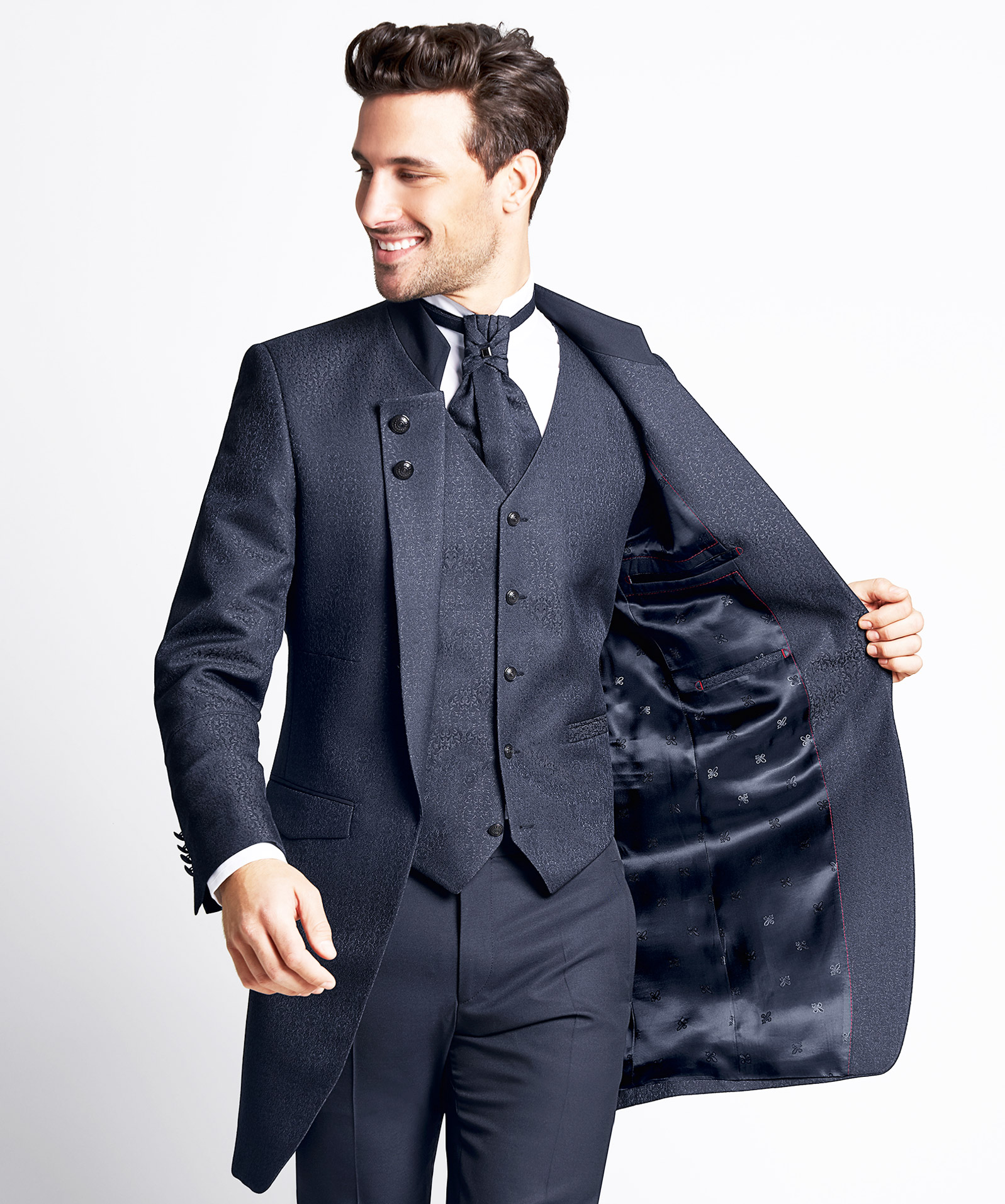
Basics of lining construction
The pattern of an inner lining is usually the same as that of the garment to be lined. However, it differs in the inserted pleats and facing. The lining construction takes place without seam allowances, these are added to the finished lining pattern. Nevertheless, you must determine the correct length, first.
What is the purpose of lining?
The primary purpose of lining fabric is to make the inside of a garment more wearable, warmer and comfortable. Linings cover up interfacings, internally seams and seam allowances, to give the garment a clean interior finish. Besides, they make the garment feel nice, so it is more comfortable to wear. Lining material usually has a smooth surface which makes it’s easier to put an item on and off.
Where do you find lining?
Textile lining is generally used in some dresses, sport- jackets, blazers, trousers, jackets and coats. Clothes may be fully lined, half lined or partially lined. You can often find a middle ground with partial linings, such as a sleeve lining or a knee lining. The American lining is a half-lining with silk lining at the chest level in jackets or coats. The French facing is a partial lining in the same material as the outside. It is especially used on lightweight summer jackets.
Types of lining
Linings come in a wide variety of materials and styles. Man-made fibers, so-called synthetics, such as Atlas, Satin, Duchesse, Glacé, Liberty and Pongee are among the most popular fibers used for lining materials.
Underlining pattern for men’s jacket

The hemline from the bodice is 3.5 cm. 2.5 cm remain visible after the lining is attached to the garment. If the action pleat is supposed to be centered, the lining must be constructed precisely to the finished hemline, with a seam allowance of 1 cm.
The same principles are applied for the sleeves: The lining is constructed precisely to the finished hemline and provided with the seam allowance, so the pleat is centered.
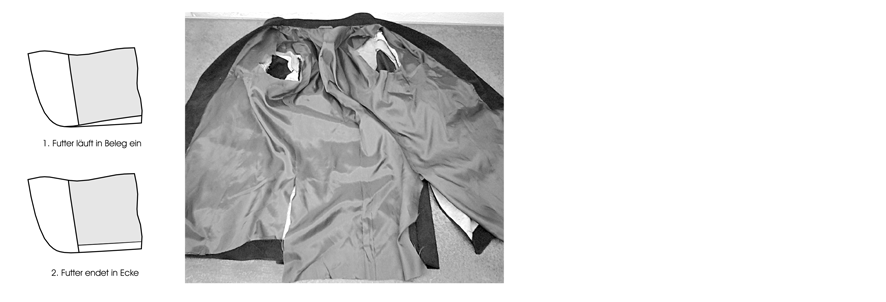
There are two options for sewing the hemline corner:
- The diagonal inserted lining enters into the front edge seam, which is probably the most common and simplest variant.
- The higher-quality variant is the square insert lining, the lining pleat ends at the facing seam. Depending on the outer fabric, the facing must either be turned over or fastened with a zigzag stitch.

In both cases, the lining is constructed towards the end of the facing (plus the ease). The seam allowance in the front part of the diagonal inserted lining is diagonally extended to the same width as of the hemline, i.e. 3.5 cm. With the square insert lining, the back and lining are clipped from below at the height of the pleat at 1.25 cm from the finished hemline. The pleat enters the facing. The front part of the lining only needs the normal seam allowance of 1 cm.
Lining pattern
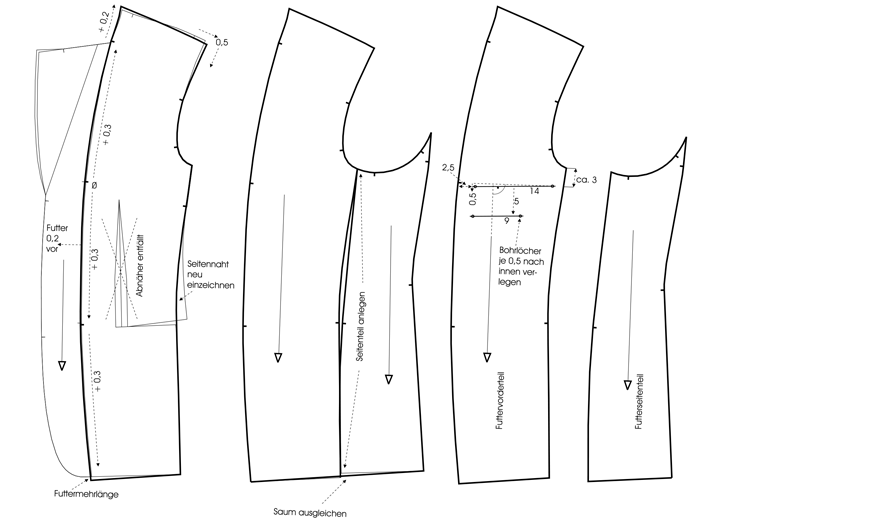
This is an excerpt from our (german speaking) reference book HAKA Schnittkonstruktion Sakkos . In this book, you can find the construction guide for the entire and a complete guide of the pattern construction for the sports jacket (including the production-ready pattern template)


